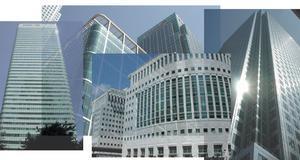The timing of the report is important. These questions have been asked for many years, but now central government incentives and taxation are increasingly influencing the buildings we construct.
New planning guidelines, Part L, the Climate Change Levy and carbon trading initiatives are encouraging (if not forcing) property clients to think carefully about the kind of buildings they are procuring.
Richard Kauntze, chief executive of the BCO says: "There is an increased element of 'stick'. But the ownership and investment side of the property industry aren't nervous about this at all. Their main concern is that they all operate under the same conditions."
The Arup/BCO paper 'presents strategies for delivering more sustainable buildings' and 'addresses the view that it must necessarily cost more, or be of lower quality to develop more sustainability.' The report considers areas where further investment gives potential benefits to occupiers, and identifies mechanisms to make these possible.
Mike Beaven, practice principal at Arup Associates worked on the report. He explains: "We sit on the BCO's Green Issues committee. We were discussing projects we had all worked on; the stumbling blocks we encountered and how we had worked round them to create more sustainable buildings. We also looked at how we'd used the way the financial model is set up for commercial buildings to do it better."
The report includes case studies, selected to demonstrate the range of involvement tenants can have in commercial development – and the consequences of that involvement. "The more the end user is involved, the more sustainable a building can be," says Beaven.
One of the key questions is how to involve the tenants of a speculative office building? Beaven agrees this isn't easy: "When the deal is being done, and the tenant is moving into the building there is a lot going on. There isn't much time to ask them questions relating to sustainability, such as whether they want air conditioning."
But Beaven says that taking the sustainable approach to this kind of construction could be as simple as building offices which don't have air conditioning, but which are designed so that it can be added quickly and efficiently. This would allow tenants to have the choice over whether to have air conditioning or not – and to make the decision based on financial or environmental factors.
The most important factor in encouraging more clients to take the sustainable route is demonstrating that 'green' buildings can save them money (in the short and long term), and create a better working environment for tenants.
Kauntze says the issue of changing views on the cost of sustainability is important: "There has been the opinion in this country that when a client wants to make a sustainable statement with their building they can – but at a high price."
The report stresses however, that this isn't about imposing designs on clients. "Neither sustainability nor good building design is about forcing the occupants to be uncomfortable."
The questions raised by the report are not easy to answer. But the important thing is that clients are involved in asking them. With the BCO on board, it isn't simply a case of engineers talking to themselves, which so often seems to happen. This is a significant step forward on the road to commercial, sustainable buildings.
Source
Building Sustainable Design





















No comments yet